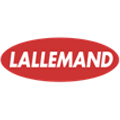 Lallemand Animal Nutrition is releasing an updated map of the heat stress risk for sows across Europe and some parts of Asia. The results indicate that, in the summer, lactating sows could spend 23% to 90% of their time above the heat stress threshold (25°C), which could lead to losses of feed intake ranging from 655 g/day to more than 2 kg per day.
Lallemand Animal Nutrition is releasing an updated map of the heat stress risk for sows across Europe and some parts of Asia. The results indicate that, in the summer, lactating sows could spend 23% to 90% of their time above the heat stress threshold (25°C), which could lead to losses of feed intake ranging from 655 g/day to more than 2 kg per day.
Heat stress in swine risks survey in farrowing rooms in Europe and Asia. Average daily percentage of time spent above 25°C (significant heat stress) and estimation of the associated feed intake reduction (Lallemand Animal Nutrition internal data, 2016-2018).

Why assess heat stress?
Thermal neutrality for swine is 18°C. Their thermoregulation system make sows sensitive to heat stress, and its impact increases with the size of the animal. Above 25°C, sows suffer from heat stress. The combination of warm temperature and humidity has several physiological consequences such as reduced reproductive performance and reduction of feed intake, leading to lowered milk production and impaired piglet growth.
A farm-based survey
To assess the situation and impact of heat stress at farm level, weather data is not sufficient or relevant for indoor swine operations. Lallemand Animal Nutrition conducted on-farm surveys using temperature probes placed within farrowing rooms across Europe and in Asia to record temperature and humidity in the sows’ conditions. This method allowed a more precise calculation of the percentage of time spent under heat stress conditions. Based on scientific literature, this data could be correlated to potential losses in terms of feed intake.
The results show heat stress could happen anywhere from the Mediterranean regions to the Netherlands or even northern Germany — and instances of heat stress are not limited to summer. For example, in Germany, a heat stress condition was recorded in October, with associated losses of performance, while the external temperature was 11°C on average. Hence, heat stress is not only about the climate: it is about farm conditions and the environment, building, and specific farm’s management.
Effects of live yeast
Nutritional approaches, adapting the diet and using feed additives, can help sows cope with heat stress. Several trials have shown the benefits of balancing the sows’ gut microbiota with live yeast. Recently, Professor Bruno Silva from Universidade Federal de Minas Gerais in Brazil, conducted a trial with Saccharomyces cerevisiae var. boulardii CNCM I-1079 (LEVUCELL SB) in lactating sows.
He reports: “Within nutritional approaches to manage heat stress, one hypothesis is that — if we could improve gut health, improve digestion efficiency — we could probably improve nutrient absorption and milk quality. Thus, we conducted a trial with live yeast S. cerevisiae var. boulardii CNCM I-1079. We observed that the sows supplemented with the probiotic yeast improved their output: piglets were heavier with higher weaning weights. When looking at milk composition, we saw a higher fatty acid profile, indicating that the piglets clearly benefited from the sow’s improved gut health and function, which leads to better nutrient absorption and, consequently, improved milk composition.”
Farm trials conducted with sows in maternity pens confirm similar benefits: improved sow feed intake, reduced body weight loss in lactation, which translated into increased piglet pre-weaning average daily gain. Hence, the live yeast S. cerevisiae var. boulardii CNCM I-1079 could represent a valuable tool to help alleviate the toll of heat stress on swine production and complement other heat abatement strategies in the barn.
May 24, 2018 – Lallemand Animal Nutrition




